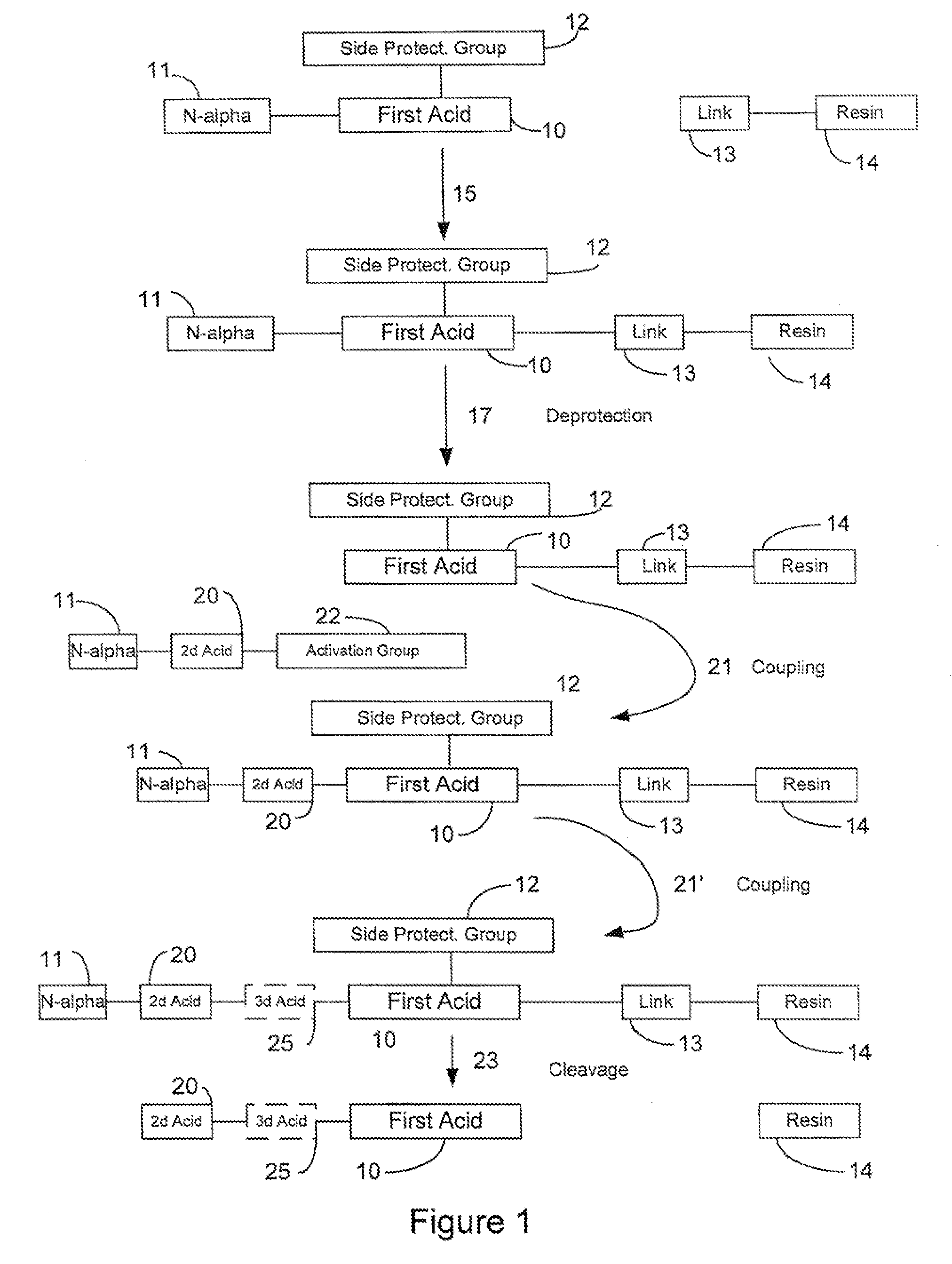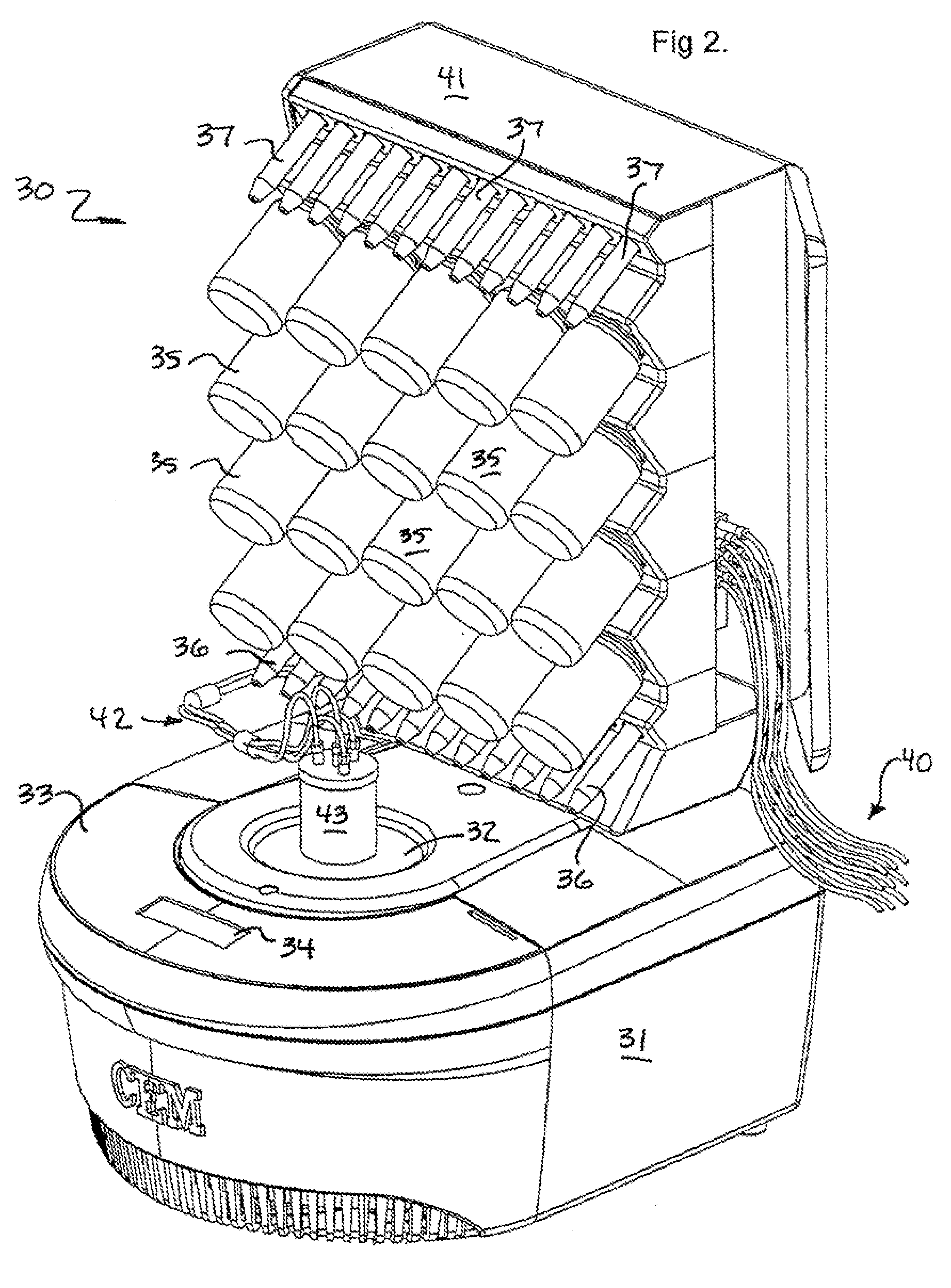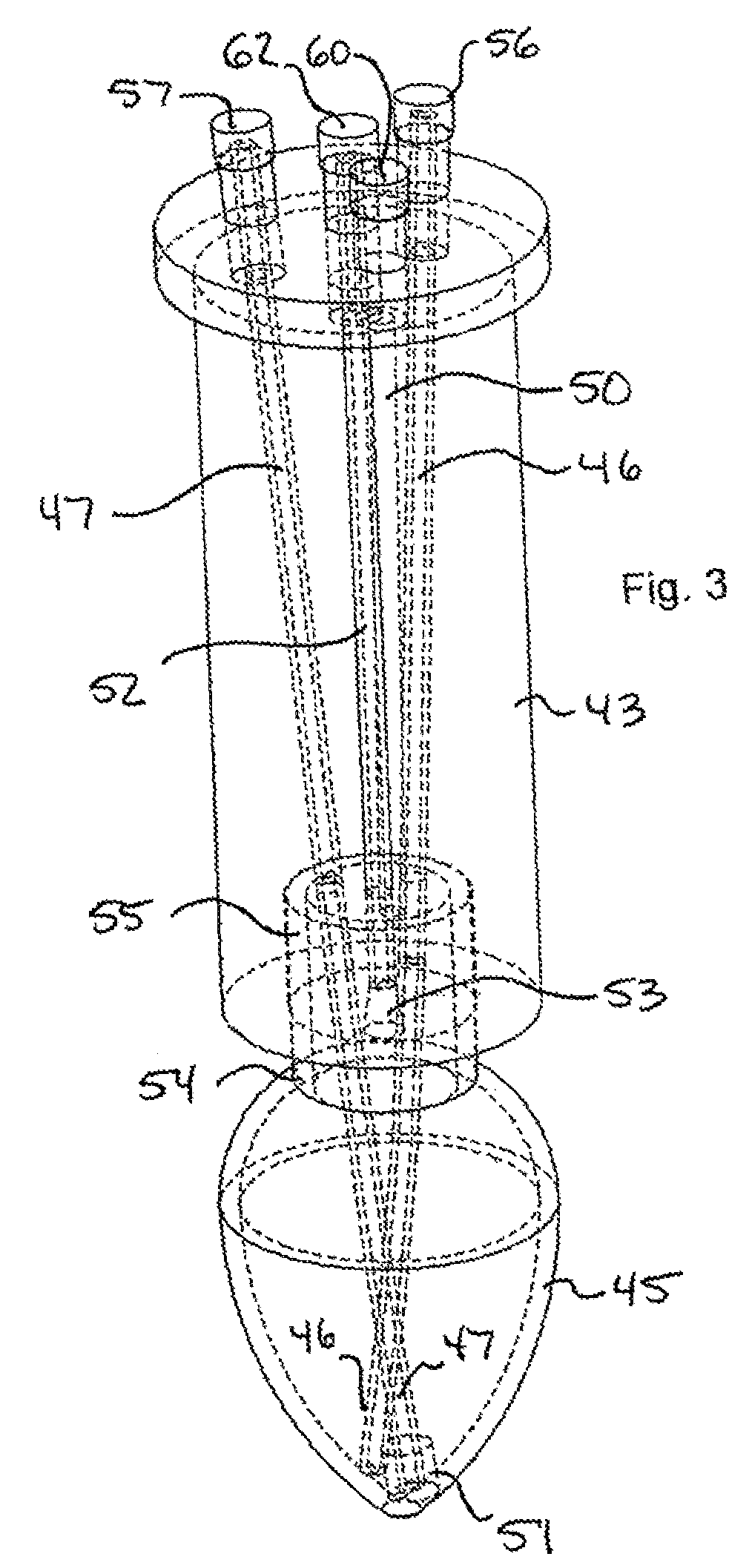Microwave-assisted peptide synthesis
a microwave-assisted, peptide technology, applied in the direction of peptides, peptide/protein ingredients, electric/magnetic/electromagnetic heating, etc., can solve the problems of low product yield, affecting the synthesis of peptides, and tangling of neuron fibers in the brain, so as to reduce the fold-back problem, improve the coupling rate, and reduce the effect of hydrogen bonding
- Summary
- Abstract
- Description
- Claims
- Application Information
AI Technical Summary
Benefits of technology
Problems solved by technology
Method used
Image
Examples
Embodiment Construction
The invention is an apparatus and method for the solid phase synthesis of one or more peptides, specifically utilizing microwave energy to accelerate the method.
FIG. 1 is a schematic diagram illustrating some aspects of the solid phase peptide synthesis process. It will be understood that FIG. 1 is general in nature and is not limiting of the invention. FIG. 1 illustrates a first amino acid 10 that includes an N-alpha protective group 11 and a side chain protective group 12 attached to it. A linking molecule 13 is attached to a resin support 14. In a first step designated by the arrow 15, the first acid and its protective groups 11 and 12 are attached to the linker 13 and the resin support 14. In a second step indicated by the arrow 17, the N-alpha protective group is removed (“deprotected”) to produce the structure in which the first acid 10 and its side chain-protecting group 12 are linked to the support 14 through the linker molecule 13. In the next step, indicated by the arrow 2...
PUM
| Property | Measurement | Unit |
|---|---|---|
| temperature | aaaaa | aaaaa |
| microwave power | aaaaa | aaaaa |
| power | aaaaa | aaaaa |
Abstract
Description
Claims
Application Information
 Login to View More
Login to View More - R&D
- Intellectual Property
- Life Sciences
- Materials
- Tech Scout
- Unparalleled Data Quality
- Higher Quality Content
- 60% Fewer Hallucinations
Browse by: Latest US Patents, China's latest patents, Technical Efficacy Thesaurus, Application Domain, Technology Topic, Popular Technical Reports.
© 2025 PatSnap. All rights reserved.Legal|Privacy policy|Modern Slavery Act Transparency Statement|Sitemap|About US| Contact US: help@patsnap.com



